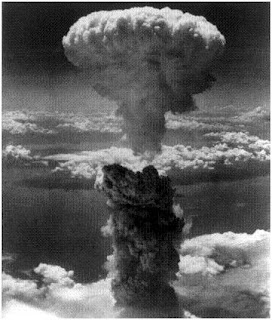Sir Humphry Davy
‘There are very few persons who pursue science with true dignity.’
In the history of atoms and elements, the name Humphry Davy appears frequently. Born in 1778, his intellectual ability and curiosity granted him an apprenticeship as an apothecary-surgeon at 19. By the age of 22 he had already discovered the effects of nitrous oxide, better known as laughing gas, and refuted the works of other well known chemists such as Antoine-Laurent Lavoisier. He published his first book in 1799 “An Essay on Heat, Light, and the Combinations of Light” which disputed Lavoisier’s belief in a substance called caloric which is described below.
“Caloric, the unweighable substance of heat, and possibly light, that caused other substances to expand when it was added to them.”
He also challenged another of Lavosier’s theories: that oxygen was present in all acids. Through his work investigating chlorine he found that oxygen was not present in hydrochloric acid – which is made entirely of hydrogen and chlorine – thus disproving his theory.
But his contributions to science were far from near completion; in 1800 he discovered that that electricity is produced by chemical reactions taking place. A year later he became a professor at the Royal Institution, formed in 1799, and would establish their reputation for excellence in both lectures and scientific research during his time there.
In 1806, even though France and Britain were at war, he was invited by Napoleon Bonaparte to receive an award for his work in science. While staying on the continent, he investigated the similar properties between iodine and chlorine and proved that diamond is a form of carbon. A year later he discovered sodium and potassium, and a year after that discovered calcium. He also discovered magnesium, strontium and barium.
Perhaps unsurprisingly, considering the huge contributions that he made, Davy was knighted in 1812. That same year he left the Royal Institute and spent some time travelling before returning to make more contributions still. In 1815, the year he returned to Britain, he invented a safety lamp for miners. It put an end to the problems of methane gas explosions caused by the candles the miners used to see. His design was described as “both simple and elegant.” It allowed the gas created to explode in small, safe amounts, so that it would never leave the lamp. The heat the continuous bursts would make was reduced by wire gauze that surrounded the light (but not surrounding it so much that it hindered the light quality!).
His work into laughing gas and other gasses was somewhat haphazard and dangerous by today’s standards. Davy inhaled his experiments as he felt this was the best way to find out the effects of what these gasses could do. Although very fatal at times he stumbled across the laughing gas(Nitrous oxide). Known names such as Robert Southey and Samuel Taylor Coleridge inhaled the laughing gas also; something that seem to be quite ‘fashionable’ at the time. Eagar to find out more about Nitrous Oxide, Davy’s when into further research, thus being one of the pillars of his success as chemist.
Davy’s experiments showed him as a man who strived to find the core of things and proving scientist before him that there was always another route.
‘ Nothing is so fatal to the progress of the human mind as to suppose our views of science are ultimate; that there are no new mysteries in nature; that our triumphs are complete; and there are no new worlds to conquer.’ http://qotd.me/ This quote can be reflected in one of Davy’s first experiments of ‘electrochemical decomposition’ going against Anthonie Lavoisiers theories that oxygen was the principle of acidity (its actually hydrogen) Davy’s stumbled across this when investigating chorine.
Humphry Davy was a well respected man within science his influence in the royal society made him a house hold name within chemistry. From his timeline we are able to see the progression of development within metal and no metal’s alike building on previous theories.
One of his ‘inventions’ ‘ the safety lamp’ was widely used within the agricultural, mining and tanning industries of that time. Although a George Stephenson produced a similar safety
He had been asked to investigate "fire-damp" (methane gas) explosions in coal mines, caused by the candles miners used as lighting. Davy's solution to the problem was both simple and elegant: he surrounded the flame of the candle with wire gauze, allowing the light to get out, and, crucially, allowing the gas that entered the lamp to explode without the explosion spreading outside the lamp: the lamp cooled the explosion down by dissipating the heat into the gauze, reducing the temperature to below the level at which the surrounding gas could explode. This invention, which Davy never patented, saved many miners' lives.
English chemist Henry Cavendish had previously stated that water was composed of hydrogen and oxygen and in 1806 Davy proved this.
Davy tried to encourage scientist to go into dept with their studies and manufactures to take a ‘scientific approach’ with their production so that it had a lasting effect, Not to take science for granted and partake in your experiment although for health and safety reason sniffing gas is not encouraged.
‘Every discovery opens a new field for investigation of facts, shows us the imperfection of our theories. It has justly been said, that the greater the circle of light, the greater the boundary of darkness by which it is surrounded.’ Humphry Davy
References:







